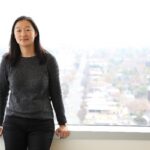How to Use Asset-Framing to Strengthen Nonprofit Work
Instead of defining people by their problems, asset-framing defines people by their aspirations, their gifts, and their contributions.

Four steps for asset-framing to benefit your nonprofit and your mission.
In The Antidote, a new documentary created in response to growing divisions of our times, award-winning filmmakers John Hoffman and Kahane Cooperman tell the stories of nine ordinary people using “kindness, decency, and the power of community” to find solutions.
If that’s a little too vague to be helpful, let me zero in on a tool that shows up time and time again in The Antidote: asset-framing.
Instead of defining people by their problems—the default for too many in the nonprofit sector—those who use asset-framing define people by their aspirations, their gifts, and their contributions.
This refocusing enables professionals to rethink how to best help those in their care. Two such professionals are Derenda Schubert and DeAmon Harges, both featured in the film.
Asset-Framing in Action
As a psychologist and expert in foster care, mental health, and developmental disabilities, Derenda knows all too well the standard script about society’s most vulnerable populations, from disconnected foster youth to isolated older adults. Instead of getting bogged down in their challenges, she brings these two often-discarded populations together at Bridge Meadows, an intentionally intergenerational community in Portland, Oregon, where elders live among foster and adoptive families, providing support while gaining purpose and community.
“Children need to know they’re beloved,” says Derenda. “And elders need to know their lives still have meaning and purpose.” At Bridge Meadows, each is the other’s antidote—and it’s making all the difference.
Youth are doing better in school, report fewer problems with mental health issues, and experience fewer behavioral issues. Best of all, 88 percent of youth formerly in foster care have been adopted or granted permanent guardianship. Likewise, elders gain new friends and family and report finding greater purpose through their interactions with children, parents, and other older adults. By harnessing the strengths of each generation, Derenda successfully flips the script, making interdependence and generational solidarity the norm.
Halfway across the country in Indianapolis, DeAmon Harges is the founder of The Learning Tree, a nonprofit focused entirely on asset-framing.
“If you listen to the news, you’ll hear about the as a place for treacherous things or things that are wrong,” he says. “Let us not forget that being African American in this country means you’ve been treated cruel at some point. We can live in sorrow of that, because those scars of my grandparents have affected me, and they affect people in my neighborhood. But what I’m looking for is healing.”
So DeAmon spends his time as a “roving listener,” going from house to house, hanging out on porches listening to people’s stories and uncovering an abundance of gifts and talents. His ultimate goal is to celebrate those gifts in ways that cultivate “community, economy, and mutual delight”—ways that help people thrive.
DeAmon’s gift—being able to reflexively see people and communities through an asset-based lens—can be learned. And DeAmon has taught hundreds of people in his community how to do it. Here are his four game-changing tips on how to bring an asset-based approach to your community and work.
DeAmon’s Four Steps for Asset-Framing at Your Nonprofit
Ask better questions.
It’s common (and common sense) to tackle a problem by looking for gaps and deficits in the system and figuring out how to fix them, but DeAmon says we need to start by asking a whole new set of questions.
Rather than what’s wrong, ask where is the community strong? Instead of what do you need, ask what are your dreams? Beyond what’s your vocation, ask what’s your sense of call and purpose?
He recommends gathering local leaders of businesses, faith institutions, and social service agencies together with community members for a discovery session with one simple rule: people in power aren’t allowed to talk. They must listen—and listen intently enough to unearth the hidden gifts and talents in the neighborhood, to make the invisible visible.
“What if our institutions bothered to take a deeper look?” asks DeAmon. “What would they see? There’s life and philanthropy and art and energy and culture and memory and history all the time in every place. And the dominant culture ignores that.”
Find and name people’s gifts.
In DeAmon’s TEDx Talk about making the invisible visible, he tells the story of Montel, a boy abandoned by the school system. When he was a freshman in high school, Montel’s teachers told him that he had reached his maximum potential and would never be able to learn algebra, get a driver’s license, or land a job beyond minimum wage.
In the face of such hopeless news, DeAmon gave Montel a small budget to gather twenty neighbors over for a home-cooked meal. After dinner, they sat in a circle around Montel and called out his gifts.
“Montel’s a great hugger.”
“He’s a great connector.”
“The dude is spiritually sound.”
But the room was blown away when Montel’s first teachers, his mother and grandmother, offered up this: “Montel is a healer.”
It turns out that at age 15, Montel was the one taking care of his wheelchair-bound grandmother, bathing her, cooking for her, and getting all the grandkids off to school on time. And when Montel’s great aunt got sick, he was the one who provided hospice care for her until she passed away. With the support of a loving community that truly saw him, Montel was able to graduate from high school and go on to nursing school, where he developed further his gift for healing others.
Help people share their gifts.
Knowing and naming a gift isn’t the same as helping someone use that gift. To make sure gifts don’t just sit on a shelf, sometimes you need to develop systems (what DeAmon calls a “gift economy”) to help people mobilize, connect, and build on their gifts and talents.
A few years back, DeAmon decided to ask the kids hanging out on Harding Street to join him in launching Biker Boyz & Girlz Shop, a community bike shop designed to give people of all ages a place to use their gifts.
Amanda Wolfe, a resident in the neighborhood, had the gift of space and offered up her garage. Each day, kids come from all over the neighborhood to learn how to fix bikes from people like 73-year-old Robbie Cole, who works at the shop as a bike mechanic. The kids aren’t treated like service recipients. In fact, DeAmon and the other adults at the shop call them “retail partners,” giving them concrete ways to put their natural business skills to use.
Every interaction at the shop is an opportunity to find and publicly name people’s gifts, then put those gifts to use. William Nowlen, a 63-year-old auto detailer, originally came to the shop looking for a bike to help him lose weight. The kids were so impressed with how he cleaned up his bike that they enlisted his skills to make sure all the bikes look their best before getting sold.
By anchoring his community in a robust gift economy, DeAmon is shaping a whole new generation of kids who are learning to see their neighbors as people with gifts and purpose, working side by side with them to run a business and strengthen the community. Everybody is a contributor with a role to play. Everybody is part of the story.
Use celebration as a capacity-building tool.
Celebrations are the key to creating spaces where people can be fully seen and where all can experience hope. When people’s gifts are called out publicly and communally—as Montel’s were—DeAmon says, it unleashes the power and potential of not only the person at the center, but the supporting community too. This kind of celebration surfaces asset-based stories that become an intangible but deeply valued currency in the neighborhood.
DeAmon models this for the kids at the Biker Boyz & Girlz Shop all the time. With a group of kids together, he often asks questions like, “What’s your mother really good at?” or “What’s she teaching you?” When the kids answer, they invariably start with specifics—like giving them clothes to wear or a roof over their heads—but they always end up at celebration. “I like how my mom is good at teaching me how to be a better person.”
By telling stories and publicly celebrating each other’s gifts, DeAmon says we participate in a philanthropic act, an act of generosity that can benefit communities as much as dollars can.
By following DeAmon and Derenda’s lead, we can all practice asset-framing, fanning out across our communities to discover and celebrate the gifts of those around us.
You might also like:
- Vision Before Strategy: A Nonprofit’s Guide to Defining Success
- Can You Hear Us Now? Using Feedback to Create Community-Centered Services
- Hedging Your Bets: Rajiv Shah, and the Limits of Large-Scale Changemaking
- Unlocking Potential: Collective Leadership in Nonprofits
- The 3 ‘Rs’ of Equitable Community Engagement
You made it to the end! Please share this article!
Let’s help other nonprofit leaders succeed! Consider sharing this article with your friends and colleagues via email or social media.
About the Author
Eunice Lin Nichols (she/her/hers) is obsessed with bringing older and younger generations together to solve society’s greatest challenges, creating a better future for all. She is vice president of innovation at Encore.org, runs the Gen2Gen Innovation Fellowship, and hosts community events like this recent post-screening conversation of The Antidote with Derenda Schubert and DeAmon Harges.
Previously, Eunice led The Purpose Prize (now a program of AARP), which has awarded over $5 million in prizes to nearly 100 social entrepreneurs over the age of 60 since 2006. She also spent 11 years leading a portfolio of statewide encore initiatives for Aspiranet to expand the social contributions of older adults in California, including scaling Experience Corps from one neighborhood school in San Francisco into a thriving Bay Area program and launching a series of initiatives that placed encore career seekers in direct service, coordination, and executive-level roles.
Eunice has been recognized as a Next Avenue Influencer in Aging and is a graduate of the inaugural class of the Billions Institute Fellowship for Large-Scale Change. In 2019, she received the James Irvine Foundation Leadership Award for advancing innovative and effective solutions to California’s most significant issues.
Articles on Blue Avocado do not provide legal representation or legal advice and should not be used as a substitute for advice or legal counsel. Blue Avocado provides space for the nonprofit sector to express new ideas. The opinions and views expressed in this article are solely those of the authors. They do not purport to reflect or imply the opinions or views of Blue Avocado, its publisher, or affiliated organizations. Blue Avocado, its publisher, and affiliated organizations are not liable for website visitors’ use of the content on Blue Avocado nor for visitors’ decisions about using the Blue Avocado website.







